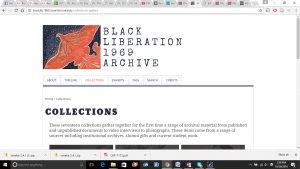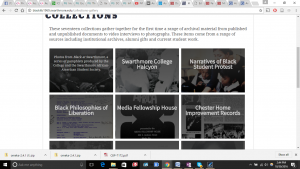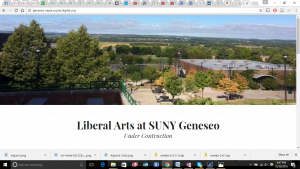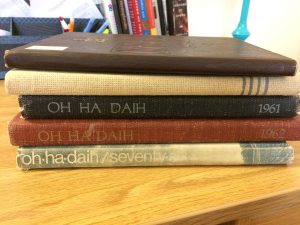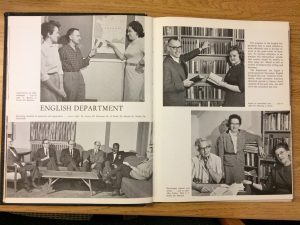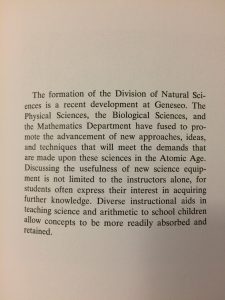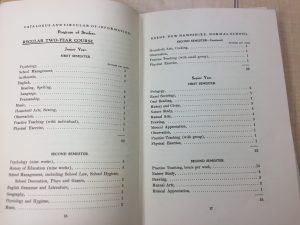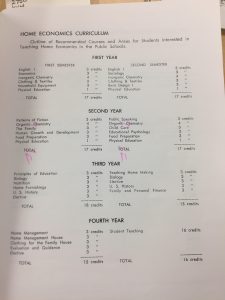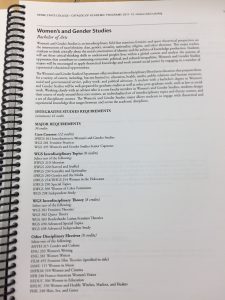I’m not a huge Star Trek nerd, but I really like J.J. Abrams’ Star Trek Reboot. I like it, in part, because there are so many aspects of each film that communicate emotion synergistically; in other words, no one aspect of the film overpowers another. As a result, viewers can synthesize the many stimuli of the movies—the action, the cinematography, the music (my favorite part), the character relationships, the well-placed and all-important silences, the gestures, expressions, and humor—into one dramatic experience.
Last week, we read about and discussed the digital humanities. Throughout our conversations, I had a revised version of the Star Trek slogan running through my head: Digital Humanities—The New Frontier. Perhaps it would be more accurate (and less aesthetically pleasing) to call it, “The New and Ever-Evolving Frontier.” While any implication of Star Trek will struggle with traditional gender biases and the colonialist/industrialist “Star Trek Syndrome,” I find the Star Trek slogan apt for many reasons, and in this post, I seek first to discuss Star Trek as a structure for exploring digital humanities, and then to discuss how Star Trek affected my research process this week. Here’s the full slogan:
“Space: the final frontier. These are the voyages of the starship Enterprise. Its five-year mission: to explore strange new worlds, to seek out new life and new civilizations, to boldly go where no man has gone before.”
So what is it about Star Trek that I find to be an apt metaphor for DH? In part, it’s the exploration of the unknown. DH isn’t always about discovering the unknown; it’s about making knowledge accessible to people on a transparent level so they can use it to their own empowerment. Or, alternatively, DH is meant to re-articulate the information we already have access to in ways that change our phenomenological experiences of a presupposed episteme. In this latter understanding, DH has the potential to illuminate episteme that we didn’t know we could know; DH allows one to experience something anew and elucidate new depths of an episteme that we believed we understood completely. At the least, this aspect of DH asks us to consider the possibility that we don’t have a complete understanding of the world—and at best, DH turns our attention to other humans, and how the phenomenological experience of another person (especially those not represented by traditional methods of learning and traditional presentations of knowledge) can inform our worldview.
“To Boldly Go Where No [One] Has Gone Before:” in addition to the potential of DH to expand one’s worldview, DH constantly questions the structures and technologies we use to understand information. What I find most fascinating about DH—and what makes me wish I had a more technological background—is its imaginative potential, it’s insistence that knowledge should be re-articulated in new and exciting ways, and most importantly, the value it places in the creation of new technologies. Have an idea that would express your project in an original and startling way, but there’s no existing way of making it happen? Digital Humanities advocates for the creation of technologies that allow us to probe the depths of both new knowledge, and the knowledge we’ve already taken for granted.
I could write about Star Trek and DH all week, so I’m going to move onto the question: what does this have to do with my own research project? This week, my research was to explore tools that I think will allow me to articulate my discoveries in the most expansive ways possible. Finding tools was easy enough: a google search of “digital humanities tools” yields several great websites that explain tools used in popular DH projects. One website listed hundreds of tools in areas such as “storyboarding,” “annotation,” “editing,” “exhibitions,” “research tools,” “text analysis tools,” and tools that assist in “text preparation in digital work,” among others.
I’m still sorting through the list, but here are a few tools that I think are pretty cool:
Voyant Tools: Voyant is a text analysis program that is incredibly easy to use. At its most simple, one enters a website URL and Voyant analyzes word usage, frequencies, and links between words. It presents information as word clouds, charts, lists, and several types of graphs. But paraphrase is heresy—go check it out yourself.
Sentiment Analysis: This tool creates “Recursive Deep Models of Semantic Compositionality.” Put more simply, it analyzes how positively or negatively one feels about something. I think this is an incredibly interesting concept, which is why I included it. BUT it seems like it has the potential to be very troublesome in projects like we’re doing—especially because it makes a potentially flawed analysis of another person’s feelings. Regardless, this is another simple tool: enter the text you want analyzed and the program does the rest.
Odyssey: I’m not going to say much about this one because I think people should check it out for themselves. It’s an awesome medium for presenting interactive, multi-layered narratives using technologies beyond the written form.
History Flow Visualization: This tool documents the evolution of a project by separating edits into layers. Definitely a good tool for analyzing the process of creation.
Scraper: See something you like on a website or DH project? Scraper allows you to highlight the part of the page you like and scrape it from the page to be exported for your own use.
Overview: Overview may be a little more than we need, but the idea is helpful. The tool helps organize and visualize many different stories. I think it’s meant for more data than we’ll be dealing with, but who knows!
OpenCalais: I find this tool fascinating because of its focus on metadata—something I see as vital for transparency in a DH project. OpenCalais allows for the annotation of content “with rich semantic metadata.” In terms of our project, this gives us another venue, or point of access, as Dr. Woodcox likes to say, for how we communicate our information. Instead of one jumbled and complicated body of text that desperately tries to convey the totality of context, this tool allows for several bodies of text surrounding a piece of information. And who doesn’t love “rich semantic metadata?”
Express Scribe: This tool probably has the most practical implications for us. Express Scribe “assist[s] the transcription process of audio recordings.” There are probably other tools like this, so checking out our options would be helpful.
Like JJ Abrams, I’m seeking the culmination of these tools; the synthesis of a layered narrative interface, multiple venues of conveying context and data, visualizations of linguistic connections and personal anecdotes, and organizations that allow for the experience and re-experience—and re-experience—of my story.

